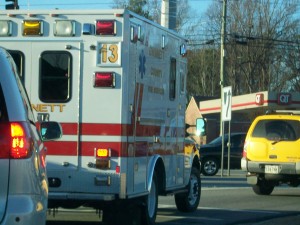
On Sept. 13, Public Safety transported two Ohio Wesleyan students to Grady Memorial Hospital. OWU typically sends around 5 to 10 students to the hospital per year, making the number unusually high for so early in the academic year.
One student was reportedly admitted for a welfare concern regarding an unspecified illness. However, the other was for “acute alcohol poisoning.”
Typically, if PS encounters a student showing symptoms of acute alcohol poisoning, they will transport that individual to a hospital for medical attention.
PS officer Christopher Mickens said that when a student is clearly unable to take care of his or herself, then overconsumption of alcohol is the probable cause, if not the worst-case scenario of alcohol poisoning.
Mickens added that he uses several questions in order to gauge how much a student has had to drink. Incorrectly answering questions such as one’s name, the date or day of the week, current location, and an inability to locate friends are potential indicators for Mickens.
Symptoms of alcohol poisoning as summarized from awarealertalive.com including mental confusion, unresponsive, snoring or gasping for air, throwing up and loss of consciousness.
And incidents like this aren’t just happening at OWU.
According to the ‘College Drinking’ page from the National Institute on Alcohol Abuse and Alcoholism (NIAAA) website, “an estimated 599,000 students between the ages of 18 and 24 are unintentionally injured under the influence of alcohol.”
The statistics are taken from a 2009 study published in from the Journal of Studies on Alcohol and Drugs titled “Magnitude of and trends in alcohol-related mortality and morbidity among U.S. college students ages 18-24, 1998-2005.”
The NIAAA also states that “an estimated 1,825 college students between the ages of 18 and 24 die from alcohol-related unintentional injuries, including motor vehicle crashes.”
Commonly, OWU students fear receiving a violation or a fine for contacting PS in an emergency. Even knowing these fears, PS highly encourages students to call.
Director of Public Safety Bob Wood said, “it’s a violation, but it’s better than getting hurt or losing your life.”
While on night shifts in previous years, Mickens and other officers have noted that there are intoxicated students being dropped off at their dorms, or even the emergency room without ever contacting PS. This led to the addition of the medical amnesty policy, which is meant to be “an educational process, not a punitive one,” said Mickens.
The OWU Student Code of Conduct includes the following policy:
“Students who seek medical attention for themselves or others because of the over-consumption of alcohol or other drugs will not be charged with violations of the alcohol or illegal drugs policies through the Office of Student Conduct.”
But Mickens cautions students that there aren’t an unlimited number of “free passes” and a conversation will likely take place in an attempt to prevent any situation from escalating to this level.
Public Safety is also considered the first responders to the scene of a medical emergency if they arrive before an ambulance. But often, the Delaware City Police comes with ambulances and they aren’t as likely to give a pass.
Mickens stated that he doesn’t think that there is a large increase in the number of incidents from years past. He said that several factors contribute to these statistics. The circumstances: who you decide to surround yourself with when you drink, how attentive those people are and the location.
He dismisses the common scapegoat of blaming the newest freshman class. And the numbers back it up.
According to Public safety, there were 33 reports of alcohol-related concerns in 2011, 22 in 2012, 26 in 2013 and 14 so far in 2014. These figures are calculated by calendar year and they represent all alcohol-related issues, not just alcohol poisoning incidents.
In his 15 years at OWU, Mickens feels he has noticed a shift toward health-conscientiousness in the younger generations.
“I think that you all are more in tune with ‘What it is to be healthy?’ I’ve noticed less of our students smoking and less true binge drinking, ” said Mickens.
As a parent himself, Mickens wants students to keep future goals and loved ones in mind when making decisions about their safety and health.
“The best Mother’s day gift you can give is to walk across that stage,” he said.
